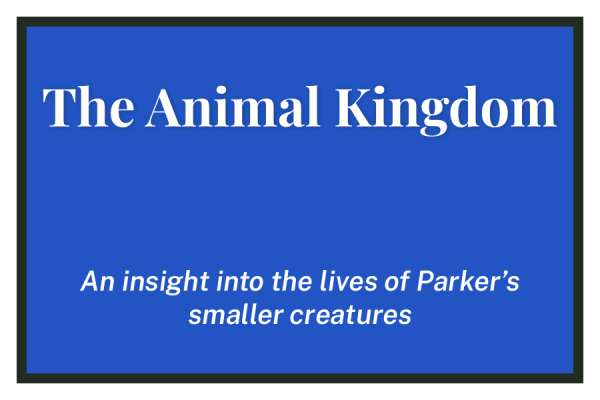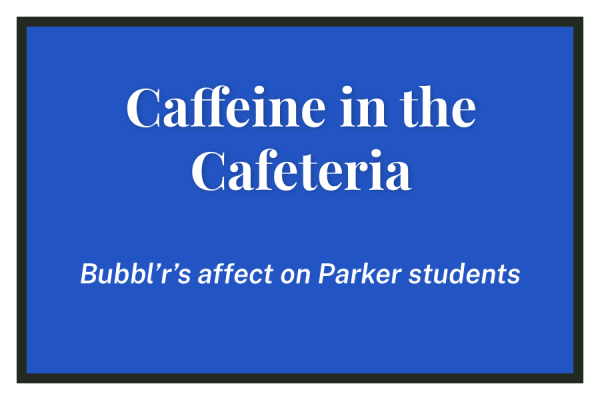A New Phase For Phaedrus
Phaedrus Moves Towards Centralized Staff
Copies of a magazine with a dark, glossy, black background and the iconic “Ghostface” mask from the 1996 movie “Scream” adorn the Upper School tables. In front of the sorrowful eyes of the mask are two sketched red hearts, above large yellow text that reads: “Phright Phest.” Eight letters lie in a bright red color along the bottom of the ‘spooky’ cover: Phaedrus.
The student-led literary magazine Phaedrus announced on October 17 that they will be experimenting with a ‘cut policy’ for their upcoming issues. The policy was suggested by Upper School English teacher and Phaedrus sponsor Matt Laufer.
Phaedrus’ second faculty sponsor, Upper School English teacher Cory Zeller, said the move was in an effort to “make sure we have high quality content.”
The intention behind the policy was to change the traditional way that students submit to Phaedrus. “If everybody just gets in, does it lose its cachet?” Zeller said. “And so we were thinking that we absolutely want enough material, but we also want the best material to be published, and so I wouldn’t really say it’s a policy, but we were saying if someone submits four images, we pick the best one or two.”
The decision to bring up this policy was spurred by Laufer’s previous experience with literary magazines at other schools in his life. “I’ve never come across a magazine that published everything it gets. I’ve never heard of that, so I guess I entered that with some skepticism,” Laufer said. “My sense is, it may feel like the norm here, but that it’s not the norm, in my experience, in other high schools, and certainly in other kinds of publications, so for me, it seems worth just asking.”
This idea, however, was not due to any issues Laufer may have had with Phaedrus and its content in the past. “So my thought, it was in no way a judgment of the quality of Phaedrus so far,” Laufer said. “I’ve enjoyed Phaedrus for years, but more just a conceptual idea on how to generate a publication that is serious and intentional and beautiful and captivating for readers and not just any old place to publish any old thing. I think if you make it really beautiful, and exciting, and varied, as a publication, and partly through being selective, that you’ll drum up more interest rather than less.”
The Phaedrus heads recall this meeting in particular when Laufer suggested this new idea for a possible policy. “I think he just brought it up in one of the meetings, and he brought up a lot of good points with it, like encouraging higher quality submissions,” Phaedrus head and sophomore Star Rothkopf said, “and also, mostly with our first issue, we just had too many submissions but that wasn’t an issue with our second issue, so we didn’t cut anything in our second issue.”
The move was not originally met with agreement from all members of the Phaedrus team. “I think there was some hesitancy from the Phaedrus heads because we had never done something like that before,” Zeller said, “but for our first issue, which was ‘Phaedrus Girl Summer’, I think what ended up happening is it really solidified into a publication of twenty-eight pieces that were really high quality.”
Those who regularly contribute to Phaedrus have mixed feelings about this new policy. Regular contributor and junior Maddy Leja feels that this policy is not a good idea. “I’m personally not a fan. I see why they implemented it, because, for the first issue, I know that they had a ton of submissions.” Leja said. “I think they overestimated how many submissions they would be getting after this one because people get busier during the school year, so there aren’t going to be enough submissions.”
The heads feel that this will not be a policy enforced for every future issue, but will depend on the number of submissions collected from the student body. “I feel like it’s going to be on an issue by issue basis just because we never really know how much we’re going to get from the student body at any given point,” Rothkopf said. “No matter how much we advertise, some people might just submit an eight-page story, and we’re just going to account for that.”
After receiving feedback from the heads, Laufer felt that the term ‘cut’ was misleading. “If you actually read the email, it doesn’t say we’re going to cut people, it says if you submit multiple pieces, we are going to try printing one, maybe not all, and the ones that are not published will go online. So to me, that’s not a cut,” Laufer said. “It’s rather to select fewer, not necessarily every single one of the submissions by one artist, and to privilege it into a special place of print publication, and the others to still have a place online.”
Laufer feels that some hesitancy to consider this policy may have come from the culture of inclusion at Parker. “I think that you know that there is a spirit at Parker of inclusivity and a no-cuts policy on the athletic front, but in fact, that’s not exactly true when you get to the top levels of athletics,” Laufer said. “Maybe there are no cuts but nobody’s guaranteed minutes, nobody’s guaranteed to be published, so to speak, on the soccer team.”
For future issues, Laufer thinks that this policy will improve the thought put into each and every submission. “So I was just asking, is it the case that, for example, if an artist submits ten photographs, that Phaedrus will always, definitely, publish all ten photographs. What if that means that there’s a lot of photography in that issue? Is that okay? Maybe it is. If not, couldn’t we select, maybe, the strongest photograph?” Laufer said. “Is it a crime for editors to think about quality? Is it a crime for editors to encourage people to take a lot of care in what they’re composing, rather than just snapping an iPhone shot and submitting it?”







